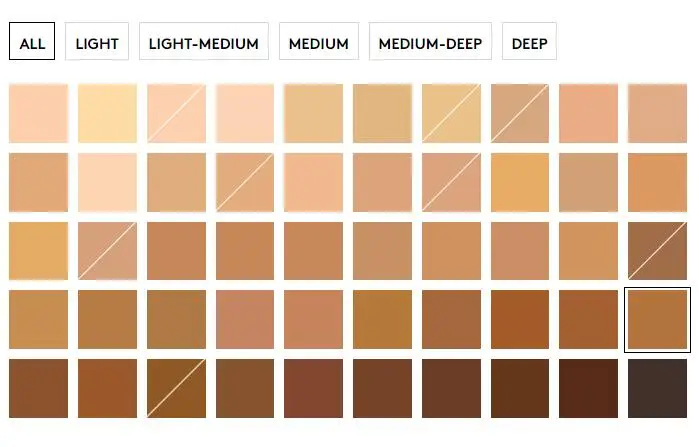How to Find the Perfect Foundation for Dark Skin

PHOTO: Yueke
Finding the best foundation for dark skin is no longer like searching for a unicorn. A broader range of foundations and makeup for women of color exist today than ever before - something for every shade of beautiful! Where’s the best place to start to find your own flawless foundation? Read on for our pro tips for choosing the perfect foundation for brown and black skin.

PHOTO: Yueke
What’s Your Undertone?
Before beginning the search for any makeup for dark skin, you need to know the undertone of your skin type. This isn’t how light or dark your skin is, but the underlying shade of your complexion. Undertones can be warm, cool, or neutral.
To identify your undertone, look at your skin in natural light. Focus on the hue of your skin, ignoring any redness, rosacea, acne, or other discoloration. Here’s how you can identify your undertone:
Warm Undertone: Your skin has a golden, yellowed, peachy, or honeyed tone. Check the insides of your wrists. If your veins appear greenish, then you’ve got a warm undertone. Still not sure? Try the jewelry test. Gold looks better on ladies with warm undertones than silver does.
Cool Undertone: Your skin has hints of pink, red, or blue and could be described as coffee or chocolate-hued. Your veins will most likely look bluish or purple. Sure, everyone looks great in gold, but silver stands out on you.
Neutral Undertone: Your skin has no apparent warm, pink, or blue undertones. Women with this balanced skin tone can wear more foundation shades within a certain color range. Your veins look both green and blue. Gold or silver jewelry, it doesn’t matter; you look stunning in both.
Editor's Pick: e.l.f. Flawless Satin Foundation

PHOTO: Yueke
Finding the Perfect Shade
Once you know your undertone, it's time to find the perfect foundation shade. Many brands now offer extensive shade guides to help you identify the best match for your skin type. These guides often categorize shades by light, tan, medium, or deep, and include specific undertone information. Visual aids such as color swatches and images of models wearing the foundation can assist you in finding a shade that closely matches your skin.
Complete Coverage
In addition to foundation, you may need a complementary concealer for dark skin to cover blemishes, hyperpigmentation, or scarring. Concealers are also excellent for highlighting areas like the bridge of the nose and under the eyes. Combining concealer with a darker contour shade can add definition to your features. A comprehensive coverage chart can help you match your foundation with suitable concealer and contour shades, ensuring a seamless, natural look. If you're new to these products, a step-by-step makeup tutorial for dark skin can be invaluable.
Editor's Pick: BEAKEY Makeup Brush Set Professional for Eye and Face
Testing Foundation
Before applying foundation to your entire face, test it along your jawline. This area reflects your natural skin tone and is a good indicator of whether the foundation is a suitable match.
Too Light: The foundation appears chalky.
Too Dark: The foundation looks muddy.
Wrong Undertone: Warm undertones look pink with cool foundations, and cool undertones look yellow with warm foundations.
If you're unsure, test three shades—light, medium, and dark—to see which blends best with your skin. Many brands offer sample packs for experimentation.
Seasonal Changes
Remember that your skin tone can change with the seasons. You may need a darker foundation in the summer and a lighter one in the winter. Stick to the same undertone profile when selecting your seasonal shades to maintain a consistent look.
![]() Top Headlines
Top Headlines
